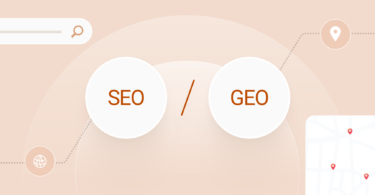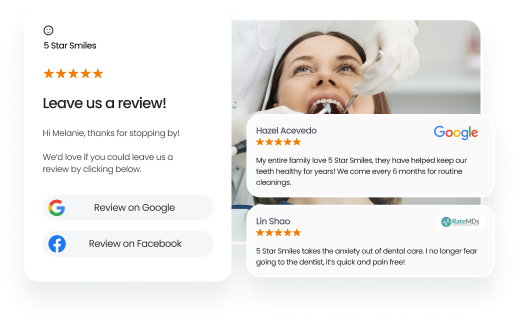Dental SEO marketing is the practice of optimizing a dental practice’s website, Google Business Profile, and reputation so the practice ranks higher in search engine results and local search results (including Google Maps). This helps dentists attract more patients, build trust, and compete locally.
When people search for “emergency dentist near me” or “dental implants in Chicago,” effective dentist SEO and tailored strategies help your practice appear at the top of those searches. Optimized service pages for dental implants and other high-intent treatments not only improve visibility but also reinforce conversion.
This blog shows how SEO drives long-term patient acquisition and which moves matter most, from GBP optimization and online reviews to targeted keywords and patient-focused content.
You’ll also see how Birdeye in 2026 ties local listings, reviews, social, and competitor insights together, so practices can translate visibility into increased website traffic and booked visits. It also includes the D4C Dental case study and highlights what’s next for dental SEO with the rise of AI.
Table of contents
- Why SEO is a powerful growth driver for dental practices
- Five dental SEO strategies that deliver measurable results (2026)
- 13 Common dental SEO mistakes to avoid in 2026
- How Birdeye transforms dental SEO marketing
- How D4C Dental scaled patient satisfaction with Birdeye Insights AI
- FAQs about dental SEO marketing
- Conclusion: Dental SEO is the new front door to your practice
Why SEO is a powerful growth driver for dental practices
Most patients begin with a search like “emergency dentist near me,” “family dentist in Austin,” or “dental implants Chicago.” Dental SEO marketing positions your practice in those moments, earns trust quickly, and converts interest into scheduled visits.
Here is how it drives measurable growth, with practical pointers woven into each step.
1. Lower acquisition costs with durable visibility
A well-structured dental website and a complete Google Business Profile continue to attract visitors from organic search even when ads are turned off. Start with high-intent service pages for dental implants, Invisalign, whitening, same-day crowns, and emergencies. Place booking actions where patients naturally look.
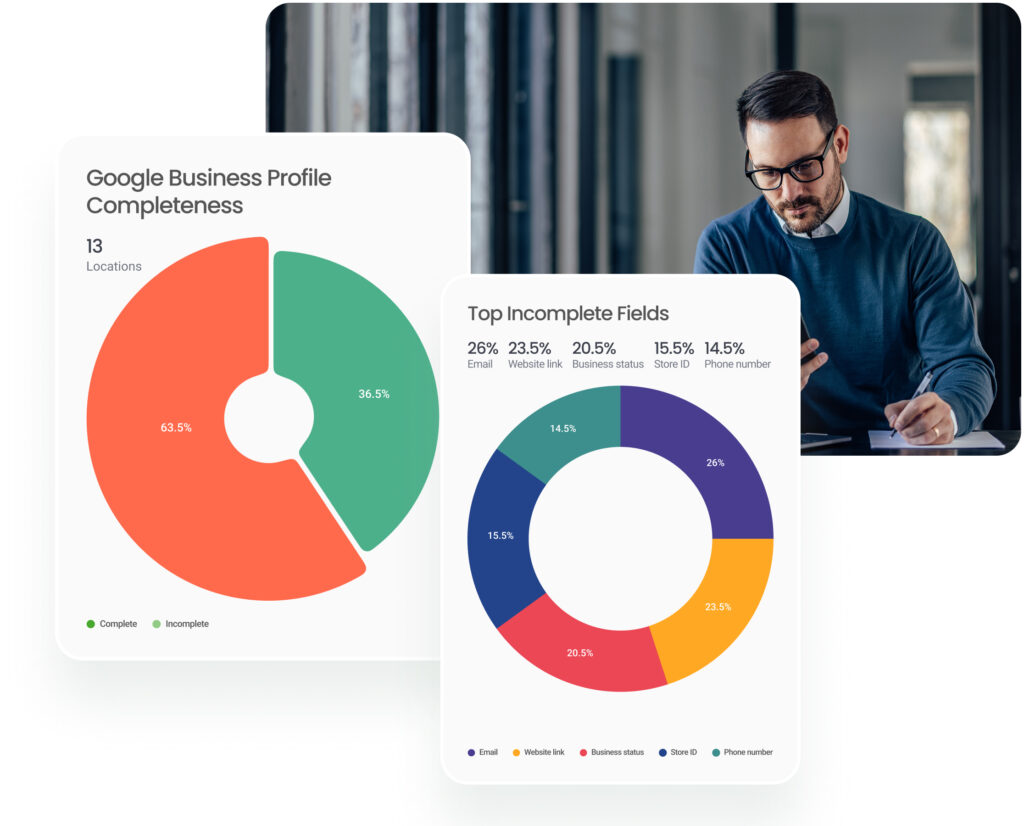
Use these quick moves inside the build:
- Add “call now,” “book online,” and financing CTAs above the fold on every service page.
- Write location variants naturally, for example, “Dental implants Miami” and “Dental implants Seattle,” and link each to its nearest office page.
2. Trust signals that increase conversions
Patients judge credibility on the search engine results page before clicking. Star ratings, review volume, and timely, specific replies turn potential patients into new patients and drive more patients from organic search results. Make dentist review requests part of the checkout process and send them within two hours, referencing the treatment when relevant (for example, an emergency dentist visit).
Strengthen the first impression as they scan results:
- Highlight average rating, total reviews, and “seen recently” in your Google Business Profile.
- Pin a recent five-star review about a priority service to the matching service page to support your SEO efforts and dental marketing.
3. Map pack visibility that drives calls and visits
Local results determine who appears in “near me” searches, so prioritize SEO strategies that maintain consistent NAP (name, address, phone number) data and a complete Google Business Profile. Choose precise categories, list services, post weekly updates, add recent photos, and answer common questions about insurance, same-day appointments, or weekend hours. You cannot rely on Google Ads alone, so maintain placement with search engine optimization (SEO) that boosts local search results.
Keep the profile fresh where it matters:
- Track calls, direction requests, and website clicks from each profile and refresh photos monthly.
- Update holiday hours at least seven days in advance for every location to help the dentist online get chosen.
4. Authority that compounds from content and links
Search engines reward depth and clarity. Create one page per service and one location page per office, then interlink related topics so visitors move from problem to solution in two clicks; whether you work with the best dental seo company, a dental marketing company, or manage in-house, avoid generic “identity dental marketing” style copy and focus on measurable seo strategies that bring more patients.
Add FAQ schema to capture conversational and voice queries like “how long do veneers last” and “best age for Invisalign,” and support your plan with ongoing search engine marketing and link building from the dental industry (associations, local media, community partners) to attract new patients and strengthen results.
Build momentum with small, consistent actions:
- Secure five to ten reputable local or industry-specific backlinks each quarter from dental associations, neighborhood organizations, and regional media outlets.
- Add internal links between related treatments (for example, implants to bone grafting, Invisalign to retainers, whitening to sensitivity care).
5. Operational improvements guided by real feedback
Google reviews and surveys reveal patterns such as wait times, billing clarity, or post-visit instructions. In fact, as per Birdeye State of Online Reviews, Google’s share of all online reviews grew from 79% in 2023 to 81% in 2024, so treating it as your primary feedback channel matters. Fix the root cause and then reflect the improvement in your website copy and Google posts. If “Saturday wait time” is a theme in Chicago, adjust staffing for those hours and publish an update.
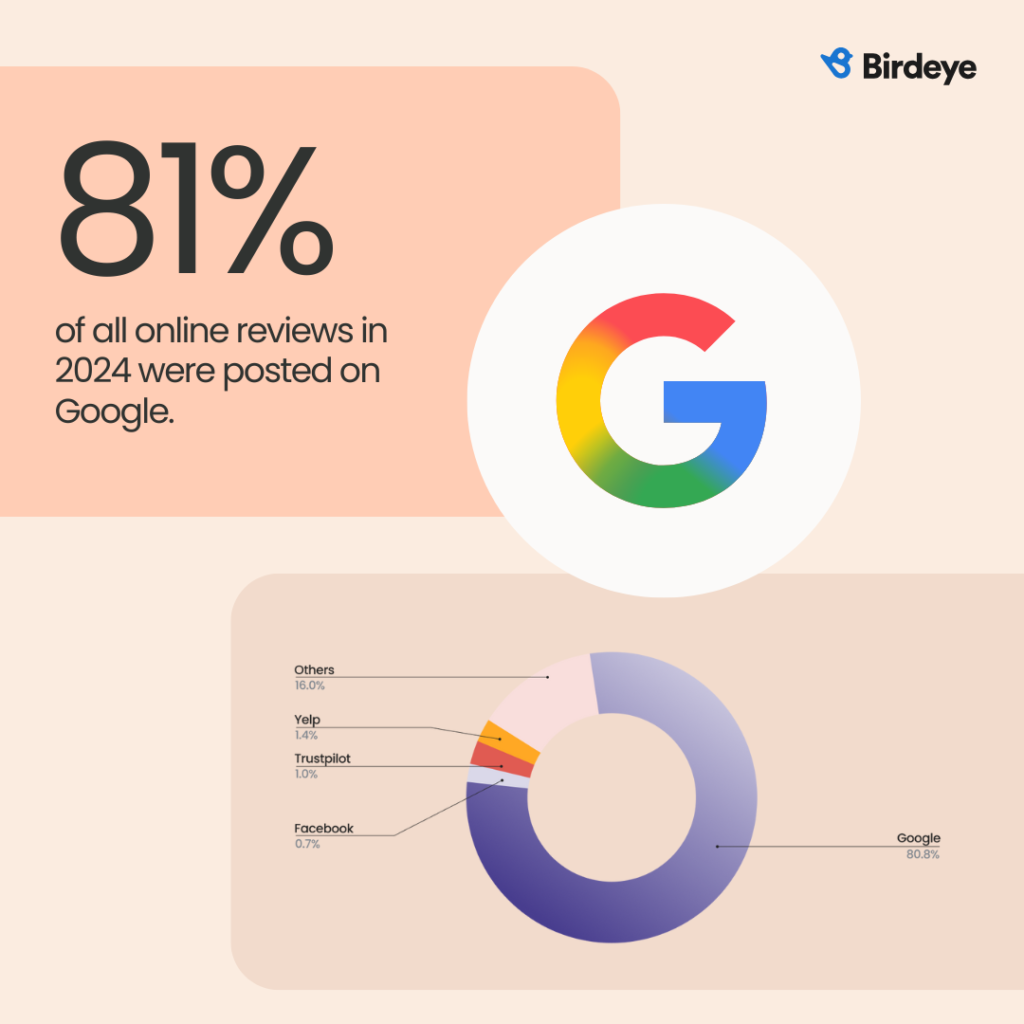
Make feedback work for both care and rankings:
- Tag review themes like “front desk,” “wait time,” and “post-op instructions,” then review trends monthly.
- Create a “what to expect at your first visit” page and link it from confirmation emails and your Google Business Profile.
6. Measurement that ties SEO to revenue
Use call tracking and UTM tags for forms, chat, and online scheduling. In Google Analytics, monitor conversion rate by page and assisted conversions from organic search. Review performance weekly so you can double down on what works.
Focus on a simple scoreboard:
- Map pack rank for priority terms in Denver and Boston, calls from your online Google Business Profile, and review velocity by location.
- Monthly report of new patients by source, with notes on which pages or posts influenced the booking.
7. AI visibility that turns answers into appointments
AI engines surface concise, trustworthy facts. Standardize your name, address, phone, hours, and services across your website, Google Business Profile, and major directories, then use clear intros and schema types (Organization, LocalBusiness, Service, FAQ) so AI Overviews, ChatGPT, Gemini, and Perplexity can cite you accurately. Keep reviews fresh and source-backed content updated to strengthen confidence signals and win more dental patient clicks.
Build momentum with small, consistent actions:
- Publish two to three AI-ready FAQs per treatment with 1–2 sentence answers that patients actually ask.
- Add a fact box on every location page with crawlable details that match your Google Business Profile.
- Audit AI Overviews weekly to spot mismatches, then update the cited page first to correct the record.
Five dental SEO strategies that deliver measurable results (2026)
Strong dental SEO puts you where patients make their decisions. Most people discover practices through categories, not brand names 86% of Google Business Profile views come from category-based searches, and 83% ask others for recommendations, which makes reviews and reputation critical.
Birdeye is a leading agentic marketing platform for multi-location enterprise brands that unifies listings, reviews, content, and social so these efforts translate into measurable growth. The five key dental SEO (search engine optimization) 2026 strategies include:
Optimize your Google Business Profile
Your Google Business Profile (GBP) is often the first point of contact patients see in search and on maps, and it directly impacts local rankings and conversions. Start by claiming and verifying your profile for every location. Complete the essentials:
- Accurate name
- Address
- Phone
- Hours
- Services
- Insurance
- High-quality photos
Keep it current with weekly updates, seasonal hours, and answers to common questions in the Q&A.
How Birdeye helps: Birdeye Listings Optimization Agent continuously scans your profiles and competitor content across Google, Apple, Facebook, Yelp, and more to flag gaps, errors, and missed opportunities in real time, contributing to over 3 billion listings impressions each year.
Quick tip: Add a short, benefit-led description to every service in GBP and attach a recent photo. Patients are more likely to tap “call” when they can see the service they need and understand what to expect.
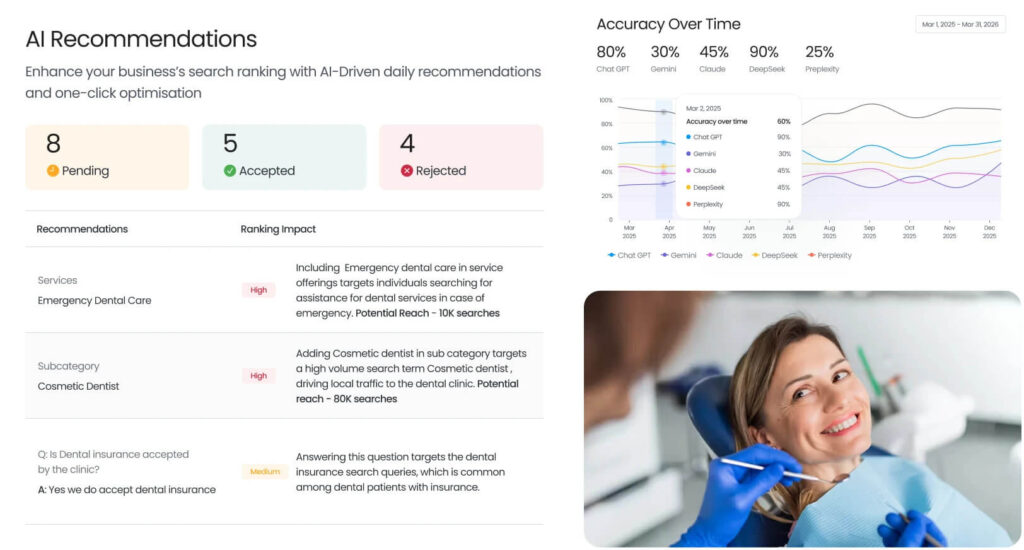
Build a high-performing dental website
Your website is your digital practice. Technical SEO sets the foundation. Improve Core Web Vitals, optimize images, use HTTPS, and ensure the site is mobile-first. Create clear service pages for implants, Invisalign, whitening, emergency care, and pediatric dentistry. Each page should include symptoms, candidacy, benefits, FAQs, financing options, and visible “call” and “book online” actions.
How Birdeye helps: Birdeye’s FAQ & Content Builder generates structured FAQs from real queries and reviews, which you can place on service and location pages. This elevates relevance for conversational and voice searches and supports inclusion in AI Overviews.
Pro tip: Add FAQ schema to your top service pages and answer each question in two to three sentences. Short, direct answers perform better in snippets and voice results.
Target the right keywords
Patients do not search for “dentist” alone. They type location and intent, such as “family dentist in Seattle,” “emergency dentist open now,” or “dental implants cost in Boston.” Map keywords to intent stages:
- Find: “dentist near me,” “pediatric dentist Miami”
- Compare: “Invisalign vs braces,” “veneers vs bonding”
- Decide: “same-day crown appointment,” “Saturday dentist Chicago”
Create one focused page per topic and per city you serve. Use natural language and include supporting FAQs.
Quick tip: Link related pages within your site. For example, connect the implants page to bone grafting, the Invisalign page to retainers, and the whitening page to sensitivity care. These clear connections help search engines understand topic relationships and guide patients toward booking.
Collect and manage patient reviews
Online reviews influence rankings and conversion. They also shape perception before a patient clicks through to your site. Ask for reviews after every appointment via SMS and email, then respond with empathy and specific details.
How Birdeye helps: Birdeye’s Reviews AI automates requests and guides on-brand responses at scale. The Review Reporting Agent surfaces trends by location and service, allowing you to see what is working and where to make improvements. The Reputation Score provides a clear, comparable metric across offices to consistently manage quality.
Publish content that answers patient questions
Educational content builds topical authority and captures patients earlier in their journey. Create blogs and guides that answer common questions, for example, “how long do dental implants last,” “what to do if a filling falls out,” or “how to prepare a child for their first dental visit.” Pair each article with a booking prompt and links to the matching service page.
How Birdeye helps: The Birdeye Listings AI’s FAQ & Content Builder turns live patient queries and review themes into location-specific FAQs and answers. This keeps your content aligned with real demand and expands coverage for long-tail searches.

Quick tip: Start each article with a 2–3 sentence direct answer, then expand with details. This format performs well for snippets and AI Overviews.
13 Common dental SEO mistakes to avoid in 2026
Dental SEO can slow down when simple, avoidable SEO mistakes arise. Use this 2026 checklist across every dental website and location to increase patient conversions from search results and local search listings.
- Duplicate or thin content: Copy-pasted pages hurt search engine rankings and confuse search engines. Create original, treatment-specific copy that answers real questions and aligns with SEO for dentists and your dental services.
- Slow or non-mobile websites: Long load times make patients bounce before they contact you. Improve Core Web Vitals, compress images, and use a responsive dental website template.
- Keyword stuffing: Avoid overusing the same terms. Write with intent, use natural phrasing, and incorporate supporting entities to strengthen your dental SEO strategies.
- Ignoring reviews and responses: An outdated Google Business Profile weakens trust and map visibility. Request patient reviews after every visit and reply within 24 hours to strengthen search rankings.
- Not tracking results: If you cannot measure it, you cannot scale it. Add call tracking, UTM tags, and goals so you can tie organic web traffic to booked appointments without relying only on Google Ads.
- Weak service pages without clear CTAs: Pages that lack benefits, candidacy, pricing guidance, and next steps fail to convert. Add visible call, book online, and financing CTAs above the fold on every dental website service page.
- No location or city pages: One generic page will not rank across multiple areas. Create unique location pages to win local SEO and improve local search results.
- Poor internal linking: Disconnected pages make it hard for patients and search engines to navigate. Link related treatments and add breadcrumbs to strengthen topical signals and search engine results.
Be the dentist they find and choose.
Want to see the impact of Birdeye on your business? Watch the Free Demo Now.
- Skipping structured data and technical basics: Missing schema, broken links, or sitemap issues block crawlers. Implement LocalBusiness and FAQ schema, submit sitemaps, and fix crawl errors to support dental search engine optimization.
- Thin credibility signals: Missing doctor bios, credentials, affiliations, or approved cases reduce confidence. Add provider bios and proof of expertise so dental professionals stand out to patients and algorithms.
- Generic or outdated visuals: Stock images reduce engagement and trust. Use recent photos of your team, rooms, and outcomes to improve clicks and conversions.
- Underused Google Q&A and Services: When Q&A is empty and dental services are missing, you give up high-intent opportunities on your Google Business Profile. Publish concise answers and list every treatment to capture category searches and boost local SEO.
- No competitive benchmarking: Without market context, you miss what top performers do. A reputable dental SEO company or dental SEO agency can audit competitors and guide prioritized seo strategies and content.
Avoiding these mistakes strengthens the discoverability of dental practices. It offers more prominent placements in local search, maps, and the results patients actually see. That added presence turns curious searchers into real inquiries.
How Birdeye transforms dental SEO marketing
Most providers focus only on the website. Birdeye brings together listings, Google reviews, social, and insights to drive rankings and bookings, so dentists see measurable growth with less manual work. Over 200,000 local and multi-location businesses trust Birdeye. It helps teams monitor, manage, and respond to reviews across more than 200 sites. Additionally, over 3,000 integrations, every location remains accurate, visible, and in sync.
Birdeye Listings AI: Be accurate everywhere patients search
The Listings Optimization Agent analyzes trends and competitor profiles to recommend the right keywords, categories, and missing details for each location across Google, Apple, Yelp, and more. Nothing is published without your approval. Every change adheres to your brand guidelines to maintain consistent profiles and enhance visibility in Google Maps and the local pack.
Birdeye Search AI: dominate visibility in the age of AI search
The Birdeye Search AI helps multi-location brands win across ChatGPT, Gemini, Perplexity, and more by decoding the prompts people actually ask, tracking where you appear versus competitors, spotting which sources engines cite, and auditing accuracy for hours, services, and locations. It also surfaces sentiments from reviews and Q&A, then delivers a prioritized fix list so your team can publish AI-ready, brand-safe content that boosts citations, corrects errors, and strengthens your local presence fast.
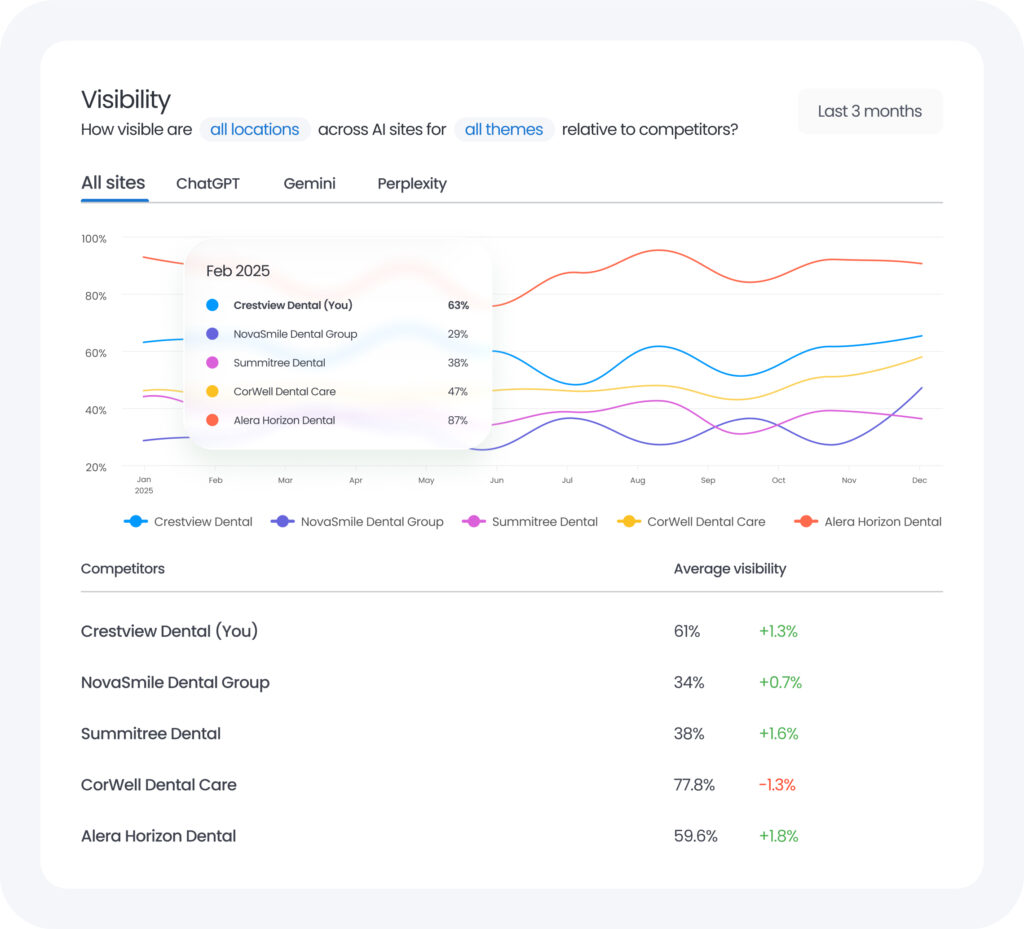
Birdeye Reviews AI: Collect more reviews and respond in one click
Trigger review requests automatically from your PMS/CRM after each patient visit, via text and email. Use Birdeye Reviews AI to draft tailored, on-brand responses that reference the treatment, improving trust, star ratings, and conversion from search results.
Birdeye Social AI: Manage every location’s social from one place
Birdeye Social AI enables you to plan, create, and schedule posts in minutes for Facebook, Instagram, LinkedIn, and more, then engage from a unified inbox. Consistent posting strengthens brand searches and funnels traffic to high-intent service pages and Google profiles.
Competitors AI: See where you can win next
Benchmark nearby practices on reviews, visibility, and sentiment with Birdeye Competitors AI. It helps you to spot gaps in services, content, and keywords. Turn those findings into targeted pages, FAQs, and Google posts that outrank local rivals.

Unified dashboard: one login for rankings, reviews, and messages
Track map positions, calls from Google Business Profile, review velocity, and social engagement alongside calls, forms, webchat, and appointments. Tie every activity back to patient inquiries and booked visits to prove ROI.
Why it matters: With Birdeye, dental professionals grow faster with less effort. Automation handles repetitive work, AI refines every message, and real-time insights provide clear guidance on the next steps for each location.
How D4C Dental scaled patient satisfaction with Birdeye Insights AI
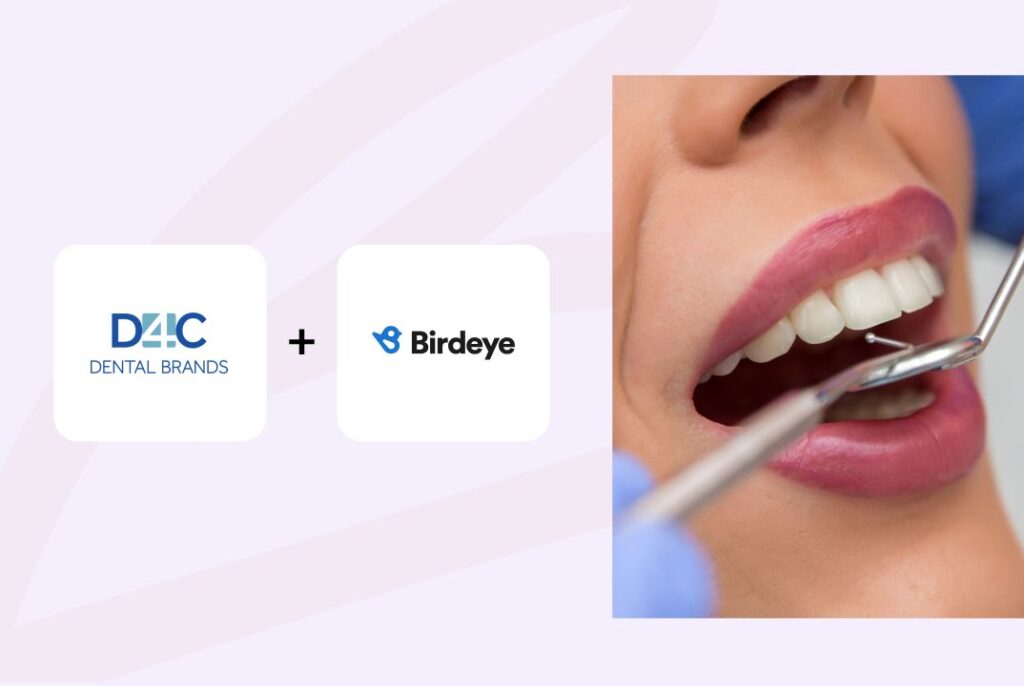
The brand
D4C Dental Brands, a DSO with 200+ pediatric and orthodontic practices across the U.S.
The challenge
Deliver a consistent, high-quality patient experience at scale while staying ahead in local search results and reputation.
The solution
Birdeye Insights AI analyzed 10,000+ reviews and surveys to surface recurring issues like peak-hour wait times and post-visit communication gaps. Quick Action Buttons turned insights into assignments for local managers.
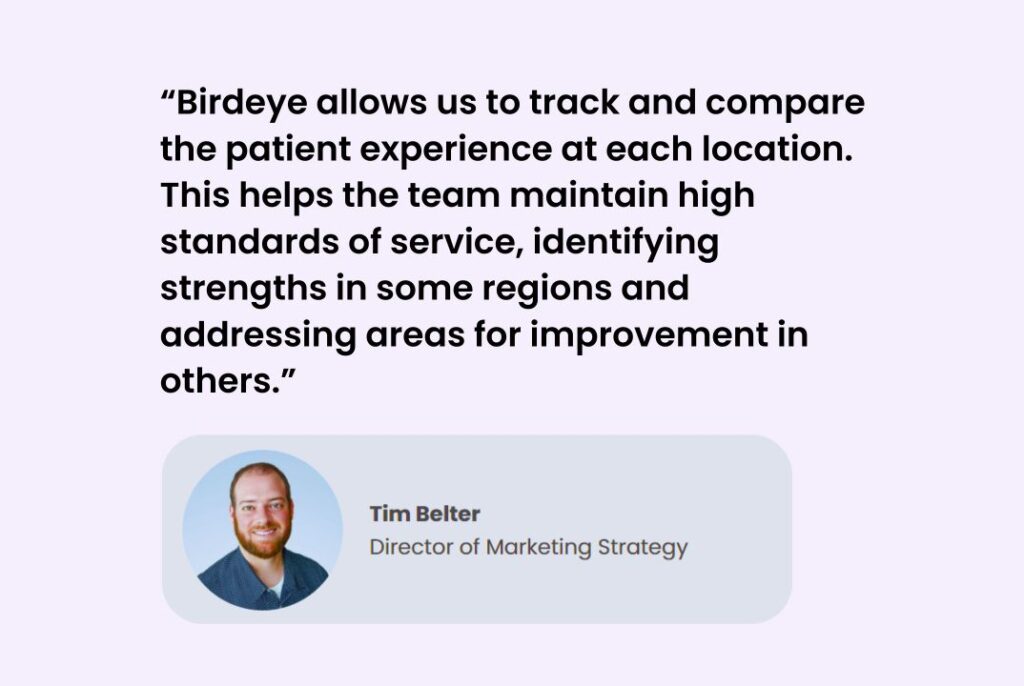
The result
They identified problems, such as long wait times, and quickly addressed them, leading to improved patient experiences, enhanced online visibility, and more effective marketing strategies.
“Birdeye helps us get more granular with our strategic decisions. It ensures resources are spent where they matter most.” – Tim Belter, Director of Marketing Strategy (Quote box)
This shows how SEO and reputation management have a direct impact on both patient satisfaction and growth.
Learn more about D4C Dental Brands and the Birdeye case study
FAQs about dental SEO marketing
Dental marketing SEO is search engine optimization for dental practices that helps increase a website’s visibility in local search results. It aligns content and service pages to real local keywords, strengthening search rankings and turning more searches into new patients.
Dental local SEO marketing specialists handle website development, keyword research, reviews, and listings the right way. They map local keywords to services and locations, helping nearby patients find you faster.
Online advertising brings quick spikes. Dental SEO compounds over time with authoritative web pages and smart keyword research. Together, they strike a balance between cost and growth.
Track website traffic, calls, and bookings alongside rankings. Identify which web pages and local keywords yield the best conversions. Utilize analytics and dashboards to inform your next steps.
Yes, patient reviews boost trust and help you rank higher. Showcase them on service pages and profiles to lift your website’s visibility and clicks from search. Make it a habit to ask for reviews and reply with care. Fresh, ongoing feedback helps your SEO improve over time.
Conclusion: Dental SEO is the new front door to your practice
Search is changing. Dental SEO now rewards content that answers real questions the way people actually ask them. Lead your pages and FAQs with clear, plain-language answers that work for AI Overviews and voice search, then support them with fast load times, simple navigation, and focused link building. Those essentials boost web traffic and local rankings, making your practice’s online presence easier to find in maps.
Personalization is the new baseline. With Birdeye’s Industry AI, you can use signals from online reviews, patient reviews, local trends, and competitor gaps to keep patients engaged. In 2026, this modern digital marketing approach accelerates patient acquisition and outperforms traditional marketing methods.
Invest in local SEO, review management, high-quality content, and ongoing link building, then let Birdeye bring it all together. The payoff is more visibility, better rankings, and more booked appointments. To learn more, watch a demo now.

Originally published
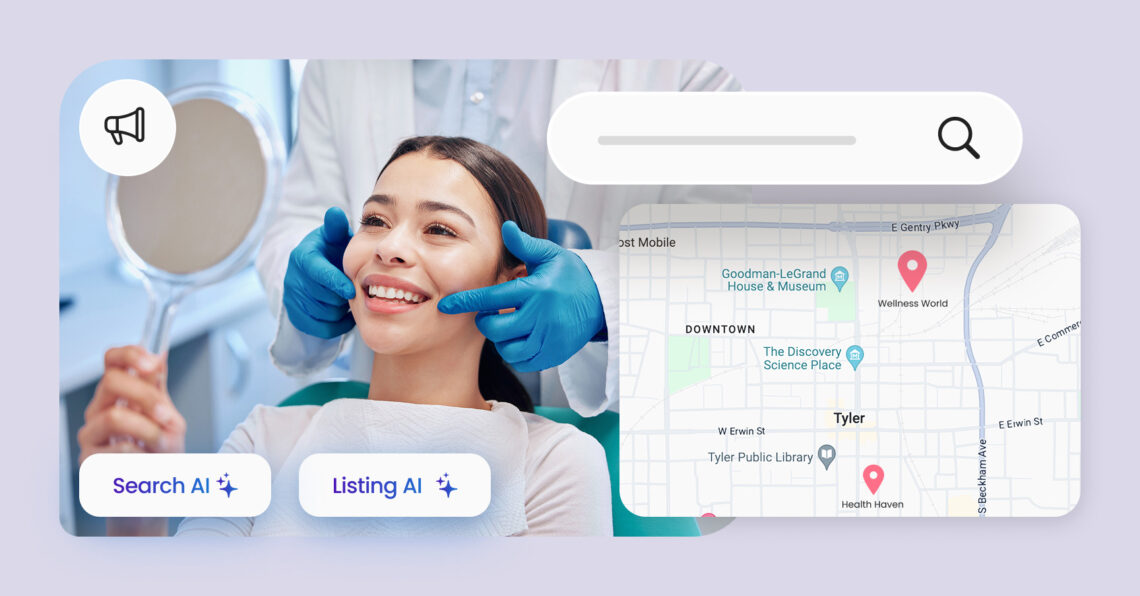



![[Feature image ] Customer-centric marketing- how to win, retain, and grow your customer base in 2025](https://birdeye.com/blog/wp-content/uploads/Feature-image-Customer-centric-marketing-how-to-win-retain-and-grow-your-customer-base-in-2025-375x195.jpg)
